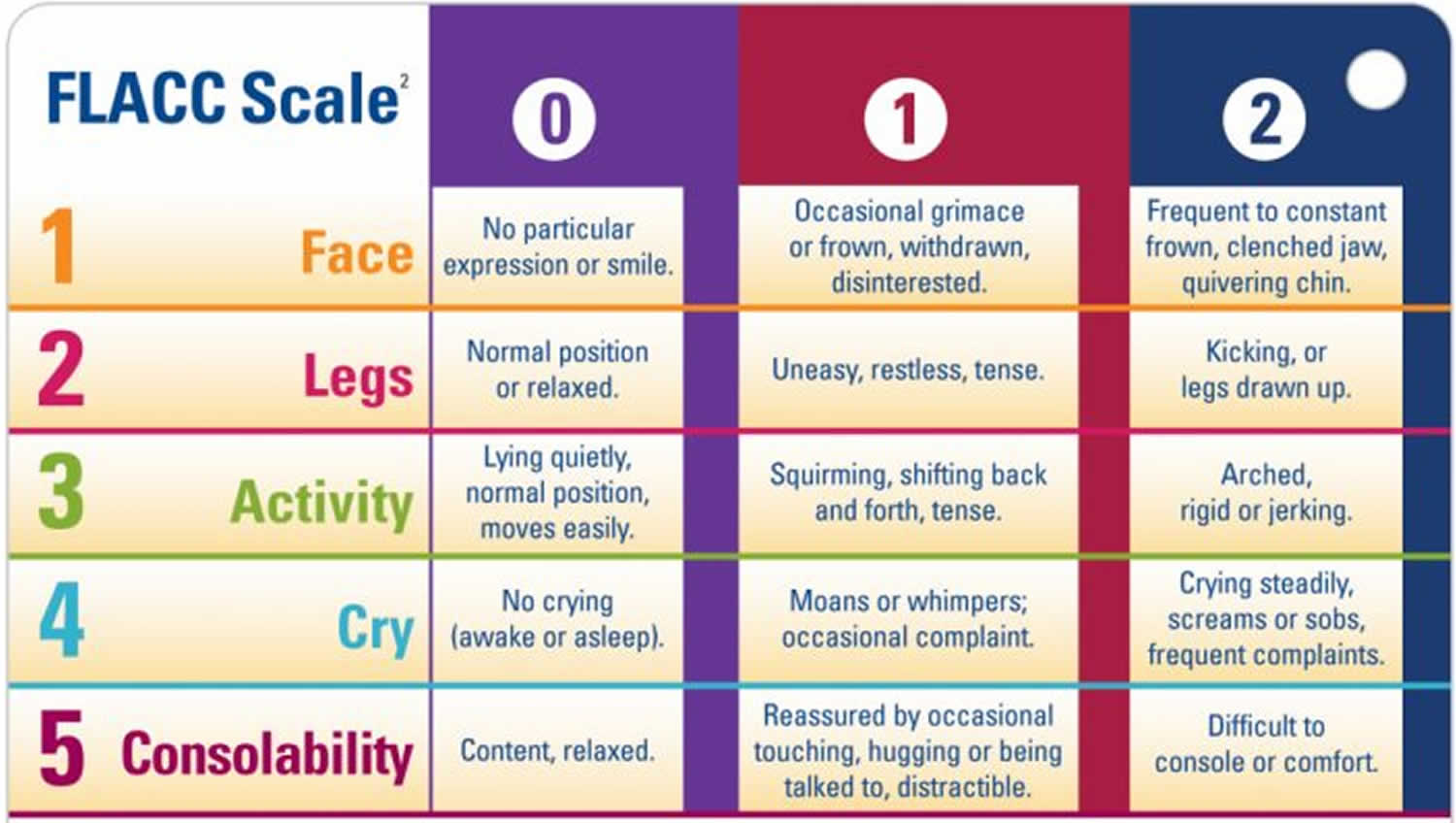FLACC scale
The FLACC scale or Face, Legs, Activity, Cry, and Consolability scale is one of the most commonly and widely used behavioral observation pain scales to assess pain for children between the ages of 2 months and 7 years or individuals that are unable to communicate their pain. The level of response for each observation is given a numerical value rating from “0” to “2,” with “0” being the most comfortable with no pain and “2” being the most painful, which results in a total score between “0” and “10.”
The FLACC scale has also been found to be accurate for use with adults in intensive-care units (ICU) who are unable to speak due to intubation. The FLACC scale offered the same evaluation of pain as did the Checklist of Nonverbal Pain Indicators scale which is used in ICUs 1.
Table 1. FLACC pain scale
| Criteria | Score 0 | Score 1 | Score 2 |
|---|---|---|---|
| Face | No particular expression or smile | Occasional grimace or frown, withdrawn, uninterested | Frequent to constant quivering chin, clenched jaw |
| Legs | Normal position or relaxed | Uneasy, restless, tense | Kicking, or legs drawn up |
| Activity | Lying quietly, normal position, moves easily | Squirming, shifting, back and forth, tense | Arched, rigid or jerking |
| Cry | No cry (awake or asleep) | Moans or whimpers; occasional complaint | Crying steadily, screams or sobs, frequent complaints |
| Consolability | Content, relaxed | Reassured by occasional touching, hugging or being talked to, distractible | Difficult to console or comfort |
Instructions
- Patients who are awake:
- Observe for at least 2-5 minutes.
- Observe legs and body uncovered.
- Reposition patient or observe activity; assess body for tenseness and tone.
- Initiate consoling interventions if needed.
- Patients who are asleep:
- Observe for at least 5 minutes or longer.
- Observe body and legs uncovered.
- If possible reposition the patient.
- Touch the body and assess for tenseness and tone.
Each category is scored on the 0-2 scale which results in a total score of 0-10.
Assessment of FLACC Pain Score:
- 0 = Relaxed and comfortable
- 1-3 = Mild discomfort
- 4-6 = Moderate pain
- 7-10 = Severe discomfort/pain





